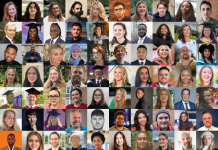The death has been announced of Dame Kathleen Ollerenshaw, former Lord Major of Manchester at the age of 101.
Dame Kathleen served as a councillor for Rusholme for 26 years, between 1956-1981, and was Lord Mayor of Manchester from 1975-1976. In 1984 she was granted the freedom of the city.
Dame Kathleen was born in Withington on 1 October 1912. Her father, Charles Timpson, was the son of William Timpson, founder of Timpson shoes.
She displayed a love of mathematics from a very young age and went on to study at St Leonards School and Sixth Form College in St Andrews, Scotland where today the house of young male boarders is named after her.
At the age of 19 Dame Kathleen was admitted to Somerville College, Oxford to study mathematics and completed her doctorate on ‘critical lattices’ in 1945.
While an undergraduate Dame Kathleen became engaged to Colonel Robert Ollerenshaw, a distinguished military surgeon. The couple married in September 1939. After the Second World War they moved to Manchester where Dame Kathleen worked as a lecturer at Manchester University.
The couple had a son Charles born in 1941 and a daughter Florence born in 1946.
In 1954, she began her political career. “To serve on the Manchester education committee seemed an ideal way of giving the public service that I had been brought up to believe should be a main objective for those not obliged to earn their own living,” she wrote. Her long political career took her to the city council and numerous national education committees, including stints in Margaret Thatcher’s administration in the 1980s
She was appointed Dame Commander of the Order of the British Empire in 1971 for her services to education. Dame Kathleen has also been awarded honorary doctorates by five leading universities, is a companion of the Royal Northern College of Music and was chair of its governing body for the first 15 years.
It was in mathematics that she may be most remembered. Her book Most-Perfect Pandiagonal Magic Squares, was published in 1998 with David Brée, a computer scientist who rented one of her rooms for several years.
Magic squares are arrays of numbers in which the sums along the rows, columns and diagonals are all equal. From that work she was able to publish one of the first solutions to the Rubik’s cube.
She damaged the tendons in her left thumb so badly with repeated turning of the cube that she required surgery.
Her career was a conquering of adversity. At age eight, she went deaf. Otosclerosis, an abnormal bone growth in the middle ear, ran in her family, and an infection precipitated her deafness. She learned to lip read and attended a school for deaf children.
She believed that her deafness made mathematics an appealing subject as understanding it relied much less on hearing than other subjects did.
In 1972 her daughter died after an 18-month battle with cancer. Her husband passed away in 1986, their son in 1999.
After her husband’s death she took up astronomy, purchasing a telescope and creating an observatory at her home.
She learned everything she could about astronomy and carefully arranged to observe eclipses and comets, either on trips or from her cottage. During the next few years she upgraded her telescopes several times, eventually donating one to Lancaster University







